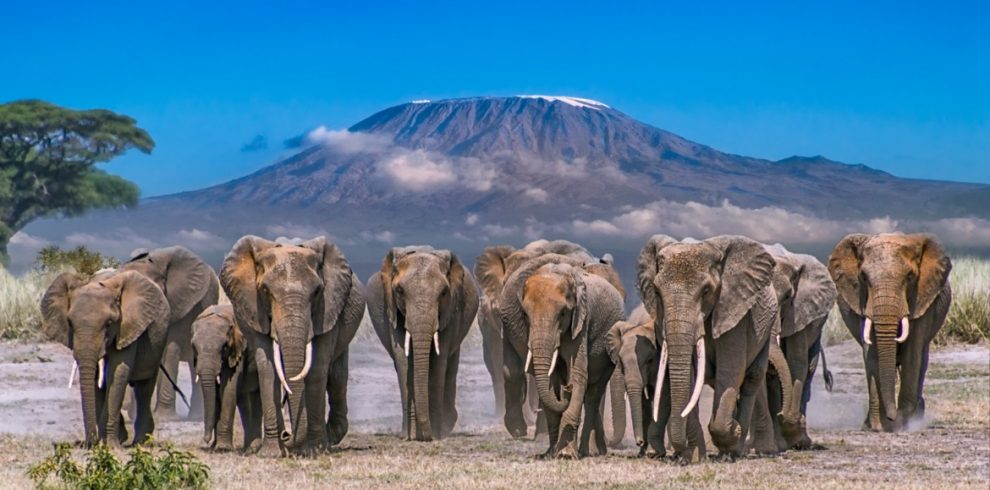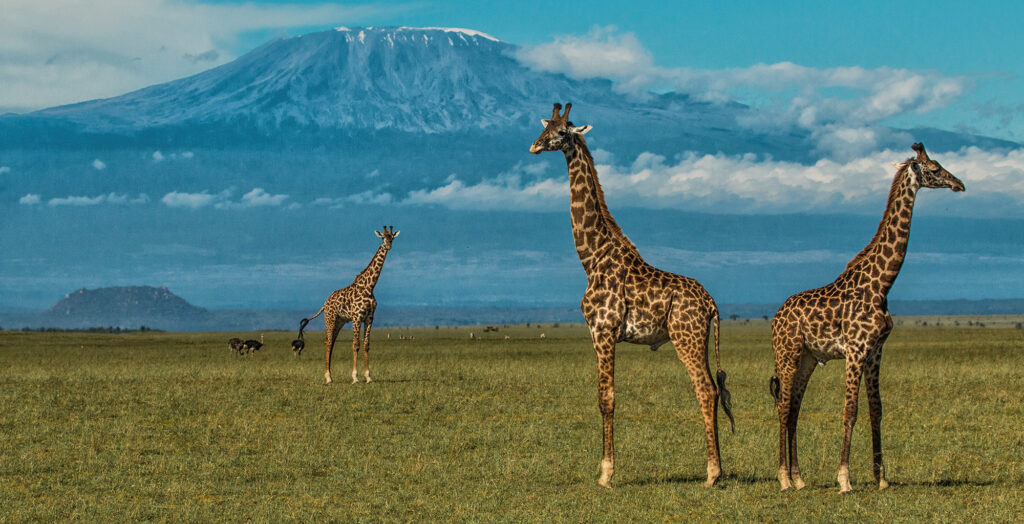Embark on an awe-inspiring journey through Kenya’s renowned national parks and reserves where nature’s drama unfolds. Witness the awe-inspiring Great Migration at Maasai Mara, discover the raw beauty of Tsavo National Park, and explore the incredible biodiversity of Amboseli National Park. This article delves into these iconic spaces, highlighting their unique wildlife, landscapes, and conservation efforts.
The Magnificent Great Migration in Maasai Mara
The Magnificent Great Migration in Maasai Mara: Maasai Mara, located in Kenya, is a world-renowned game reserve known for hosting the annual Great Migration. This natural spectacle involves millions of wildebeest, zebras, and other herbivores crossing from the Serengeti National Park in Tanzania into the Maasai Mara, establishing it as one of the Seven Natural Wonders of Africa. Discuss the timing, routes, and challenges these animals face during the migration, such as crossing the Mara River, which is teeming with crocodiles. Explore how this migration shapes the ecosystem, impacts local communities, and attracts international tourists, providing significant revenues but also posing conservation challenges. Emphasize the symbiotic relationship between Maasai Mara’s wildlife and its indigenous Maasai communities.
Exploring Tsavo National Park‘s Diverse Landscapes: Tsavo National Park in Kenya is divided into Tsavo East and Tsavo West. Extending over almost 22,000 square kilometers, it hosts a variety of landscapes from savannas to riverine forests, as well as unique geographical features like the Yatta Plateau and Lugard Falls. Delve into the history and establishment of the park, and discuss key wildlife species found here, including the Big Five: elephants, rhinos, lions, buffalo, and leopards. Highlight the park’s importance as a sanctuary for wildlife and a crucial corridor for animal migration, while discussing the conservation challenges it faces due to poaching and habitat disruption. Analyze initiatives aimed at conserving the delicate ecosystem and protecting endangered species.
Exploring Tsavo National Park’s Diverse Landscapes
Tsavo National Park in Kenya is divided into Tsavo East and Tsavo West. Extending over almost 22,000 square kilometers, it hosts a variety of landscapes from savannas to riverine forests, as well as unique geographical features like the Yatta Plateau and Lugard Falls. The park’s establishment was driven by the need to protect its diverse wildlife, including the Big Five: elephants, rhinos, lions, buffalo, and leopards. Its importance as a sanctuary and a crucial corridor for animal migration cannot be overstated, providing vital routes that maintain genetic diversity and ecological balance. However, Tsavo faces significant conservation challenges due to poaching and habitat disruption. Initiatives to conserve Tsavo’s delicate ecosystem focus on anti-poaching efforts, habitat restoration, and community engagement programs to encourage sustainable coexistence. These efforts are crucial for preserving the park’s biodiversity and ensuring the long-term survival of its iconic species.
Biodiversity and Conservation at Amboseli National Park
Transitioning from the expansive landscapes of Tsavo National Park, our journey brings us to the heart of one of Kenya’s most iconic conservation areas: Amboseli National Park. Nestled in the shadow of the majestic Mount Kilimanjaro, Amboseli is renowned for offering some of the most breathtaking scenes of wildlife against the backdrop of Africa’s highest peak. This park’s diverse habitats, ranging from wetlands with sulphur springs to the savannah and a dried-up lake bed, create a unique ecosystem that supports a wide range of biological diversity.
At the core of Amboseli’s allure are its large herds of African elephants, which are among the most studied in the world thanks to the groundbreaking Amboseli Elephant Research Project. This initiative has provided invaluable insights into elephant behavior, social structure, and conservation, significantly contributing to the understanding of these magnificent creatures. Elephants in Amboseli are often seen roaming against the picturesque vista of Kilimanjaro, offering unforgettable sights for wildlife enthusiasts and photographers alike.
However, Amboseli’s story goes beyond its wildlife. The park is a case study in human-wildlife coexistence, particularly with the Maasai communities living in its periphery. The Maasai people, with their deep-rooted cultural traditions and livestock herding practices, have lived alongside wildlife for centuries. Their sustainable pastoralism practices, combined with community-led conservation efforts, offer lessons in maintaining biodiversity while supporting livelihoods. The symbiotic relationship between the Maasai communities and the park’s wildlife underscores the potential for Indigenous knowledge to contribute to conservation strategies.
Conservation efforts in Amboseli are not without their challenges, including human-wildlife conflict and the impacts of climate change. However, the park’s status as a UNESCO Man and the Biosphere Reserve highlights its ecological importance and the ongoing efforts to protect its unique biodiversity. This designation not only recognizes Amboseli’s natural heritage but also bolsters its appeal as a destination for ecotourism, contributing to the local and national economy through sustainable initiatives.
Amboseli National Park serves as a beacon of successful conservation practices, showcasing the delicate balance between preserving biodiversity and sustaining human livelihoods. Through research, community engagement, and conservation initiatives, Amboseli continues to thrive as a sanctuary for wildlife and a testament to the resilience of nature when given a chance to flourish.
Conclusions
Kenya’s Maasai Mara, Tsavo, and Amboseli National Parks offer unique, interconnected wildlife experiences. They host world-famous migrations, stunning biodiversity, and beautiful landscapes. Preservation efforts ensure these natural wonders continue to thrive and benefit the local communities and global biodiversity. By understanding the challenges and successes of conservation, visitors and experts can appreciate Kenya’s invaluable wildlife heritage.




